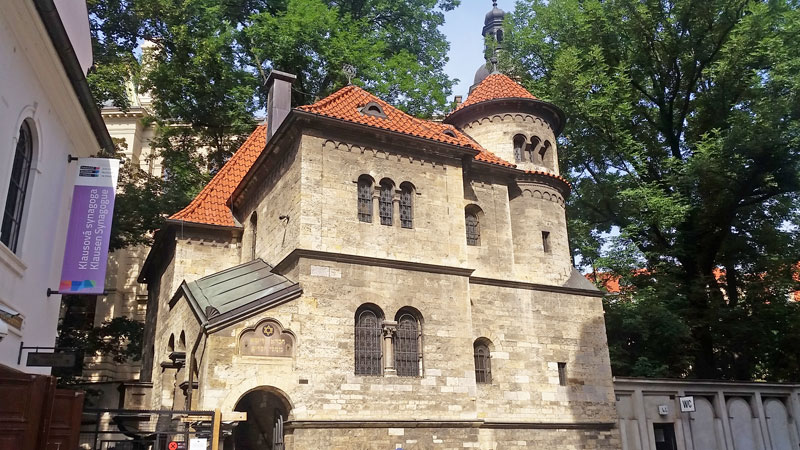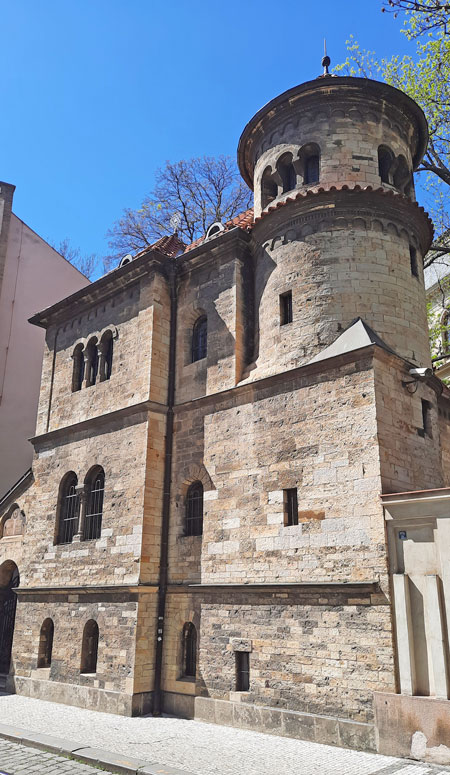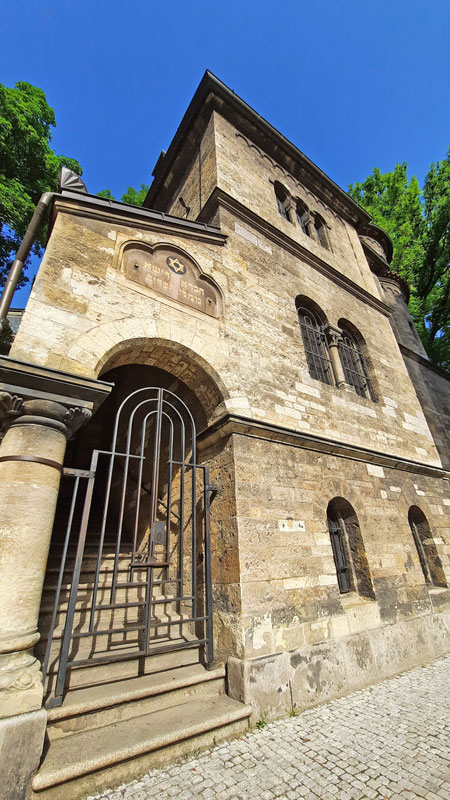The Old Jewish Ceremonial Hall in Prague, there’s more than one!
This building in Josefov is strongly linked to something called Chevra Kadisha and I’ll explain more about them below. Both the Old Ceremonial Hall and the adjacent Klausen Synagogue deal with Jewish customs and traditions. The Old Jewish Ceremonial Hall story is described on my Old Town and Jewish Quarter Walking Tour.

It’s important to note that there are two Jewish Ceremonial Halls in Prague so this post is largely about the one that tourists can visit in Jewish District as part of the Jewish Museum ticket and is a museum of exhibits. The actual functioning Jewish Ceremonial Hall is attached to the New Jewish Cemetery in the 3rd District.
What is Chevra Kadisha?
In the simplest form it translates as “Sacred Society”. Or to give it’s full original title it is the “Chevra Kadisha Gomlei Chasadim” which translates as “The Holy Brotherhood of Those Who Perform Charitable Deeds”. Seven hundred years ago the purpose of Chevra Kadisha was to make sure that a Jewish person was buried in accordance with Jewish traditions but originally it had a membership and hence it carried out the burial rites only for it’s deceased members.
In 1564 a man called Eliezer Ashkenazi started the Prague Chevra Kadisha and it was the first in the world to perform the burial ceremonies for any Jewish person in the city. The first Ceremonial Hall was a simple building which contained a morgue, an office and a ritual room. To this day these same ceremonies are performed and it is seen as an honour to be part of this society. They are not allowed to make any profit from death so anything paid should only cover the costs of necessary transport and physical items required.

The Original Buildings
The Old Jewish Ceremonial Hall that you see today in Josefov is the third version at the Old Jewish Cemetery and on the map below I’ve marked their locations. This map is from 1869 and shows the old ghetto layout. In the original layout of the Jewish Ghetto the first Chevra Kadisha building was on the other side of the cemetery at the end of Pinkasova Street (marked as 1) just along from the Pinkas Synagogue and right next to the original entry to the Old Jewish Cemetery. This building burned down in 1754.

The second version of the Old Jewish Ceremonial Hall is marked as 2 and was built (or an existing building repurposed) on the far side of the Old Jewish Cemetery in what’s often called “Building 274” on what is now Brehova Street opposite what used to be a Jewish Bathing House.
In 1787 King Josef II banned all burials in the Old Town and from then on the burials have taken place in the 3rd district Olsanka cemeteries. Building 274 was demolished in 1905 during the destruction of the Jewish Ghetto so the Chevra Kadisha were forced to build the next Ceremonial Hall between 1906 and 1908 so that is now the museum and is marked on the map as 3.
The Chevra Kadisha maintained a working Ceremonial Hall attached to the Old Jewish Cemetery in one of it’s three versions until 1916. It was then that they decided to stop using this location and instead moved the function to the current Jewish Ceremonial Hall attached to the New Jewish Cemetery. A strange decision as the building was less than a decade old but geographically it made sense.
Prague Old Jewish Ceremonial Hall Functions
As you may have guessed, the role of Chevra Kadisha is largely social care with an organising function that Jewish people can take advantage of in times of need. One of these functions is the aftermath of a person dying. This is when a body will be taken from from the place of death to the Ceremonial Hall where the necessary rituals are performed. There are more women (Metaherot) than men (Metaherim) that perform the tasks as described below:
Sh’mirah: Keeping a vigil over the deceased from the time of death until burial.
Rehitzah: Cleaning and washing the body.
Taharah: Ritual purification with flowing water.
Halbashah: Dressing the body in shrouds (takhrikhim)
Hashkavah: The burial process either in a coffin or burial only in a shroud.
Shiva: Assistance with the mourning process.

So the Prague Old Jewish Ceremonial Hall in Josefov is a museum that introduces you to all of that process and adds physical examples like the silver tools, donation boxes, pictures and prints showing the process and some of the oldest wooden gravestones in Europe. It is a real process of peace and calmness, a very natural process as the deceased is not clothed, has no jewellery or makeup applied and even if a coffin is used it’s a simple wooden box without metal parts.
If you want to know more about the responsibilities of Chevra Kadisha that you won’t learn by visiting the Prague Old Jewish Ceremonial Hall then I strongly recommend you spend some time reading this Death and the Maidens article from 2016 which is a fascinating look at Chevra Kadisha from a woman’s perspective.
The Route

The Prague Old Jewish Ceremonial Hall is one of the locations on the Jewish Museum entry ticket. If you start your explorations at the Pinkas Synagogue then you’ll walk through the Old Jewish Cemetery and you’ll find the building entry on your left just as you exit the cemetery. If you are prepared to read everything on display then allow an hour. These are all described on my Old Town and Jewish Quarter Walking Tour.
Something Related or a Few Minutes Away
Destruction of the Jewish Ghetto
Attractions – Old/New Synagogue
Attractions – Spanish Synagogue
Attractions – Old Jewish Cemetery
Attractions – Pinkas Synagogue National Holocaust Memorial
Streets – Paris Street – Rebuilding the Jewish Quarter
Famous Czechs – Mordechai Maisel
Jewish Prague – Journey of a Torah Scroll
